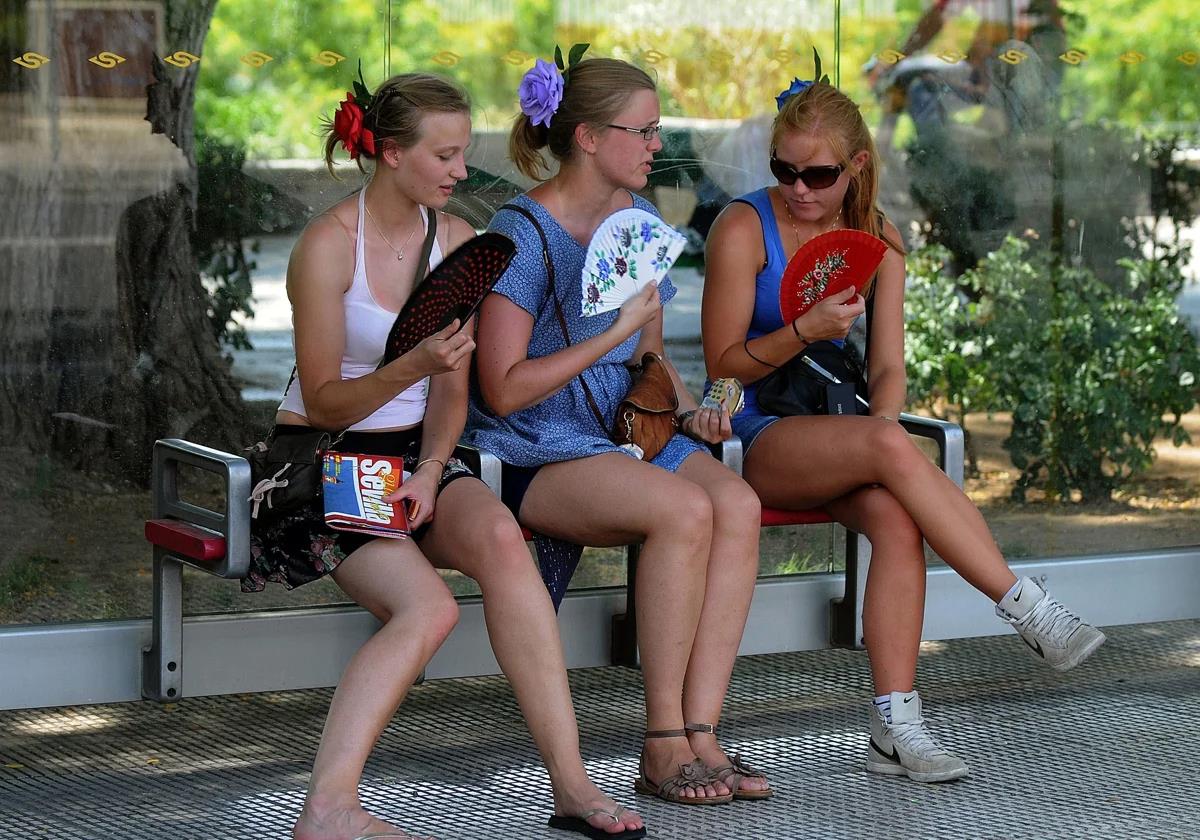Who and how should we react to the heat alerts issued as the mercury rises in Spain?
The warnings, specific to each of the 182 zones into which the country has been divided, seek to minimise the thousands of hospitalisations and deaths caused by the heat each summer
Across Spain thermometers began to soar at the end of May and, as in recent summers due to climate change, many more days of high or very high temperatures and an increase in heatwaves are expected. This is the reason why, from 15 May until 30 September, Spain's Ministry of Health will implement a special plan to combat the impact of high temperatures. This plan includes the activation, in coordination with the regional governments, of multiple protocols and actions to try to minimise the tens of thousands of hospitalisations and thousands of deaths (at least 2,000 in 2024) caused in Spain by excessive and extreme heat, especially among those over 75 years of age.
The central element of the plan is the 'meteosalud' health alert system, which provides advance warning to both the public and institutions of the specific heat risk level they will experience each day in each Spanish region, enabling residents to take individual precautions and public officials to take any necessary actions to protect general health based on the alert level. The authorities must publish these alert levels on a daily basis, but the ministry's website also includes a search engine for live updates and a subscription system that allows users to receive daily alerts by email or mobile phone.
The alert system provides on-demand information for each of the 182 zones into which the country has been divided, many of which are made up of municipalities in different provinces. Each zone has its own alert level based on the temperature thresholds set for that specific area by the Carlos III health institute, which are the temperatures above which its inhabitants begin to experience an increase in hospitalisations or deaths. This allows the right people in the right place to be warned of the risk.
The network has four risk levels, based on the increasing danger to health from rising temperatures, identified by a colour code. Level zero (no risk), yellow, amber and red (maximum risk). However, while excessive temperatures can negatively affect us all, there are risk factors, particularly those linked to age, poverty or illness, which mean that each person must interpret for themselves what specific measures and precautions they should take based on the colour of that day's alert for their area.
To help the public, healthcare professionals and civil protection teams correctly use each of these heat warnings, the Ministry of Health has published a guide this year that explains them. The first essential element in understanding who each colour affects and how it affects them is knowing whether they belong to any of the high-risk groups due to personal, environmental, occupational or social characteristics.
At particular personal risk from heat are babies and children under four years of age, the over-65s, pregnant women and people with cardiovascular, respiratory or other chronic diseases, as well as those undergoing medical treatment, or those suffering from mental and memory disorders, difficulties in understanding or orientation, or with limited autonomy in daily life.
Likewise, people at risk from heat include those who live alone, the homeless and tourists. Also those who suffer from poverty or even absolute destitution, often living in poorly adapted housing. Lastly, those who are excessively exposed to heat for work or sports, especially when done between 2 and 7pm.
Yellow, amber and red
In view of the above factors, the Ministry of Health indicates that the yellow level should only be interpreted as a danger (and a slight one at that) by those over 65 years of age with risk factors other than age. The amber level, the intermediate one, represents a slight risk for the general population and a moderate risk for those over 65 (high if they have more complications than age) and for children, but only those with several personal, occupational or social risk elements.
The red level should set alarm bells ringing for everyone in the area where the alert is publicised for that day. It is a moderate risk for everyone, a high risk for people over 65 and children with risk factors, but an extreme risk for people over 65 with additional elements that put them at great risk.
There is what could be considered a fifth level of alert. This is when red days occur, usually due to heatwaves. This would constitute a warning of extreme risk for the entire population, especially for the most vulnerable.
Summary of essential summer precautions from the Spanish health authorities:
-
1
1. Reduce outdoor physical activity and outdoor sports during the middle of the day.
-
2
2. Drink water frequently, even if you are not thirsty.
-
3
3. Avoid alcoholic beverages, sugary soft drinks and caffeine as much as possible, as they all cause dehydration.
-
4
4. Stay as long as possible in cool, shaded or air-conditioned places and cool off whenever necessary.
-
5
5. Wear light, loose-fitting, breathable clothing.
-
6
6. Eat light meals that help replenish salts lost through sweating (salads, fruit, vegetables, juices).
-
7
7. Pay special attention to babies, pregnant women, the chronically ill and the elderly.
-
8
8. Consult a doctor at the slightest suspicion of heat-related symptoms that last beyond one hour.
-
9
9. Never leave any person inside a parked, locked vehicle.
-
10
10. Always keep medicines in a cool place, as heat can alter their composition and effects.

